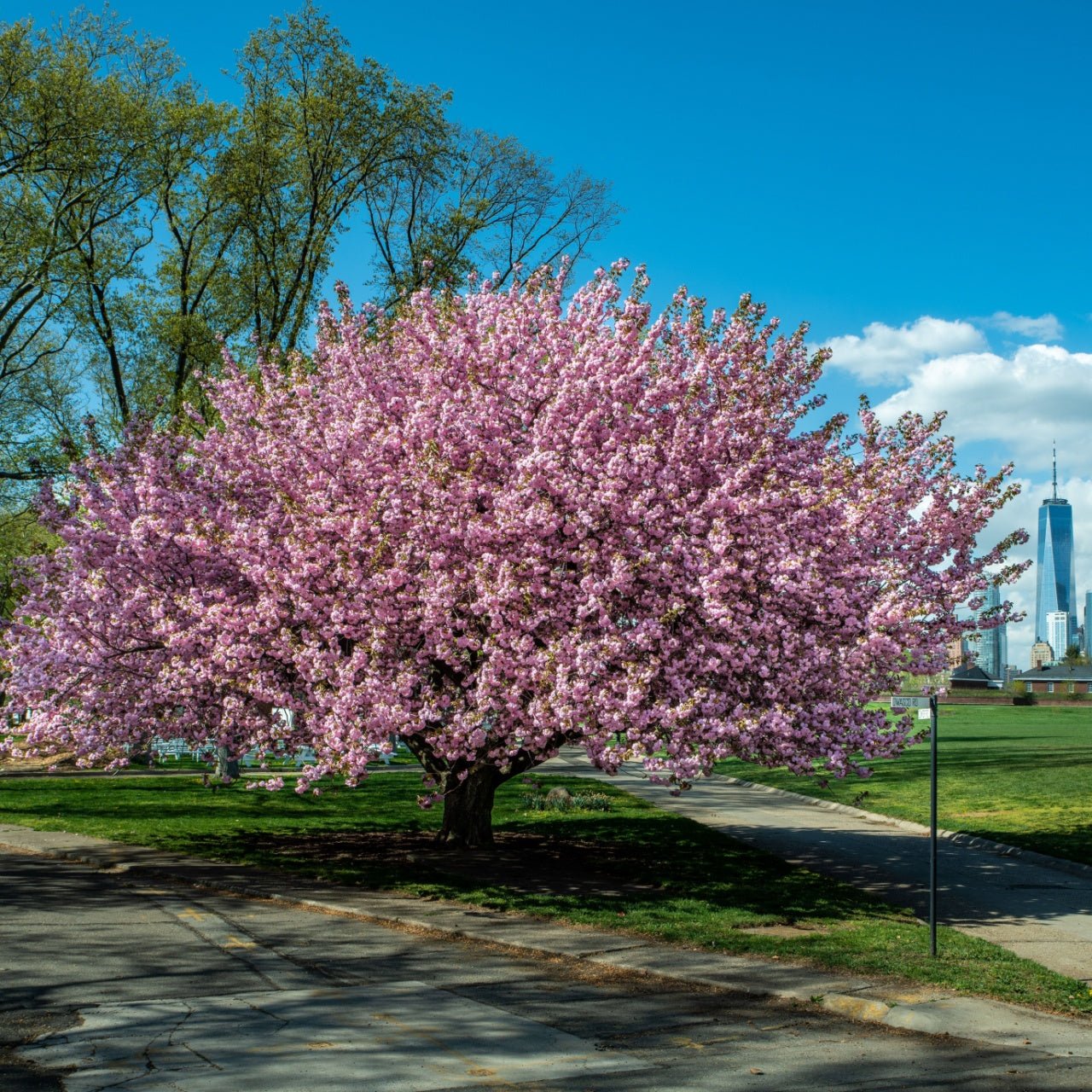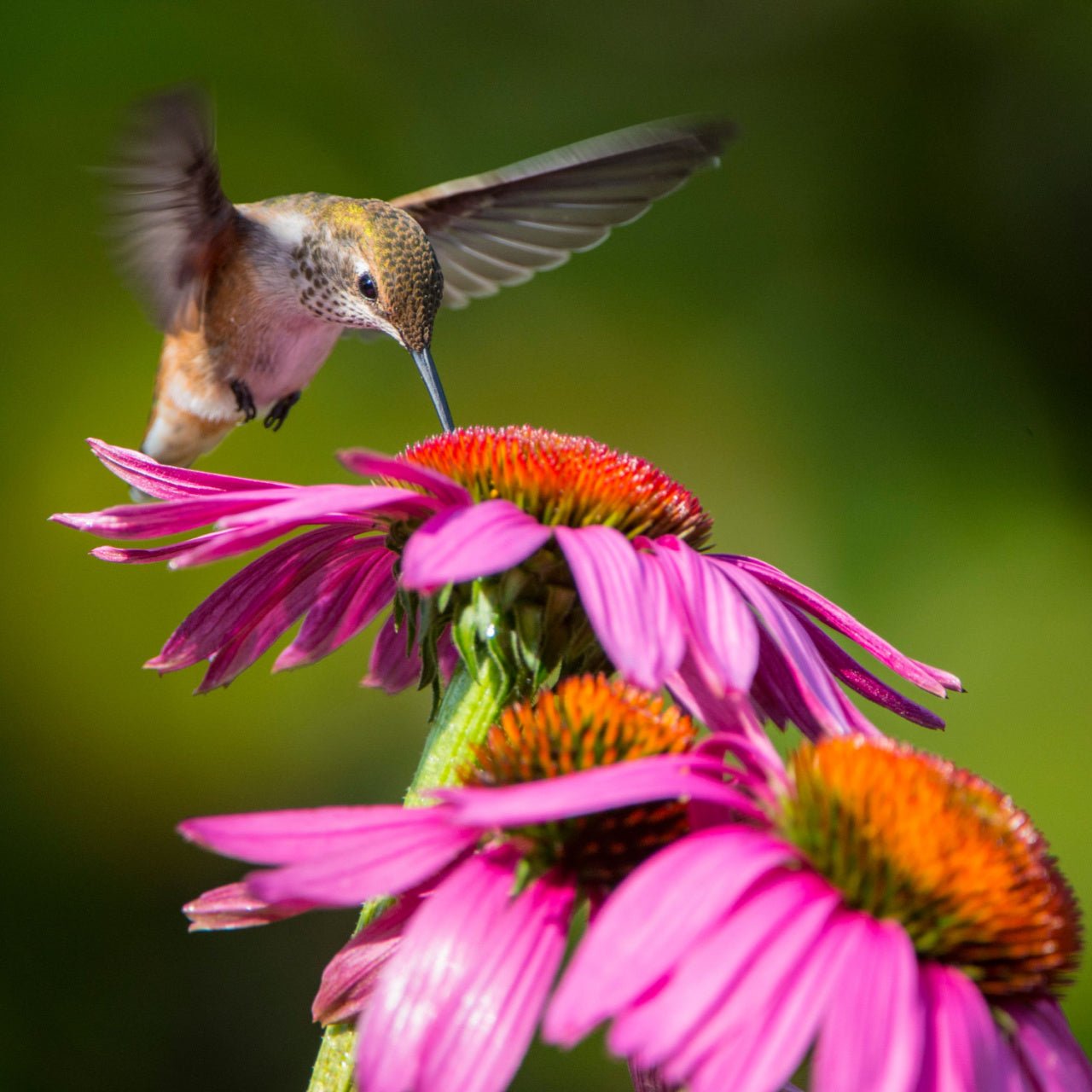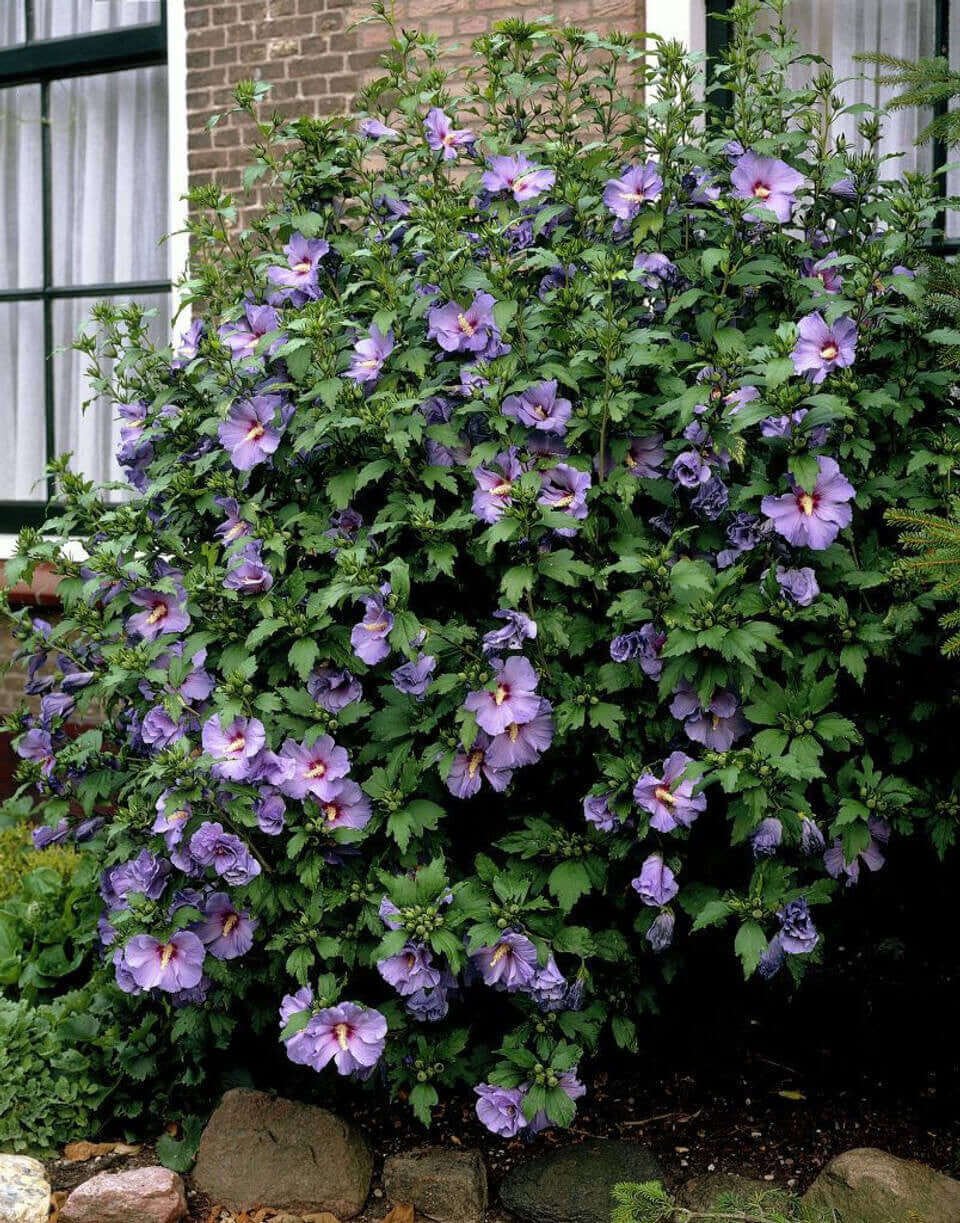

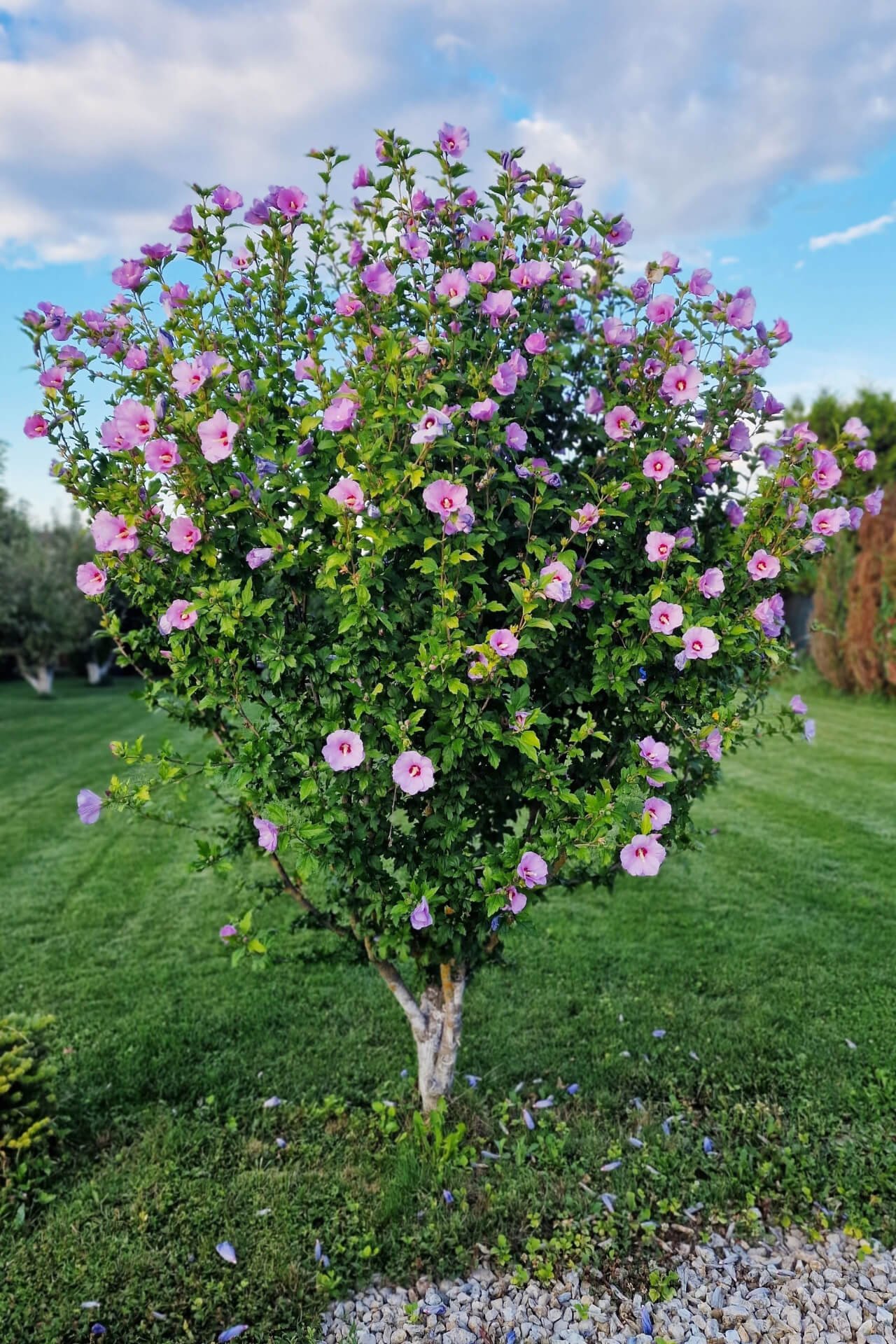

Purple Swamp Rose Mallow
Stunning purple-pink blooms
Attracts butterflies and hummingbirds
Thrives in wetland conditions
Thrives in
ZONE 4ZONE 5ZONE 6ZONE 7ZONE 8ZONE 9This plant ships:
November 20251 Year Guarantee on all plants
Purple Swamp Mallow - Hibiscus moscheutos
Purple Swamp Rose Mallow (Hibiscus moscheutos) is a multi-stemmed, herbaceous, woody perennial that is native to the eastern United States and naturally grow along creek banks and wetlands. Purple varieties including ‘Plum Crazy’ present a range of pink and lavender toned, gigantic flowers that strongly contrast with their rich green foliage. Purple varieties are less commonly found in the wild and are mostly found in cultivars.
These shrub-like perennials are fast growing with an upright habit reaching 7 ft in height with a spread of 5 ft. Due to their leggy nature, it is best to plant individuals in an area with shelter, as wind can damage these plants. The leaves of these shrubs are alternate, ovate, and a lush bright green in color.
Plant Details - Purple Swamp Rose Mallow
Family: Malvaceae
Hardiness Zones: 5 - 9
Light Requirement: Full sun
Water Needs: High
Height: 4 - 7 ft
Spread: 3 - 5 ft
Growth Rate: Fast
Bloom Time: Mid to late summer into early fall
Flower Color: Cultivars produce deep pink, reddish-purple, or magenta blooms
Wildlife Value: Attracts bees, butterflies, and hummingbirds
The Latin name ‘moscheutos’ means ‘musk-scented’ and the flowers of the Swamp Rose Mallows indeed have a musky aroma. The flowers are pinwheel-like and huge, reaching up to 8 in in diameter. The center of the flower is often contrasting to the petals, creating an eye-catching feature. From the center, a strong staminal column emerges in a light yellow or creamy white. Each flower withers quickly after blooming however the flowering period persists for up to 1 month.
Once pollinated, the seed capsules develop to be 1 in long. Purple Swamp Rose Mallows look similar to a Hollyhock; however, they are not related. Interestingly, the flowers and leaves of these impressive shrubs are edible. As it is in the mallow family, it is mucilaginous and makes a wonderful addition to salads and soups. These shrubby plants can be planted in the wettest area of your garden where other plants are difficult to establish. It is stunning when planted along stream or pond banks and the large showy flowers are attractive to pollinators.
Landscape Uses and Maintenance - Purple Swamp Rose Mallow
They prefer full to partial sun locations and consistently moist to wet soils that contain silt, loam, sand and organic material. These plants will bloom more fully in full sun locations which will also encourage them to be more disease resistant.
It is best practice to cut individuals back to ground level in autumn, since the flowers will appear on the new growth. They are pest- and disease-free and easy to grow.
Noteworthy Characteristics
Showy blooms, attractive to pollinators, grows in wet environments.
Plant these shrubs in your garden and enjoy incredibly impressive lavender blooms that give your garden a tropical ambience summer after summer. Shop for Purple Swamp Rose Mallow shrubs online at TN Nursery. For 68 years, we have served the landscaping industry and homeowners with specimen plants.
This Is How Your Plants Will Look upon Delivery

Bloom Season
Summer
Bloom/Foliage Color
Purple
Height at Maturity
Over 10 Feet
Care
Purple Swamp Rose Mallow thrives in moist, well-drained dirt and needs regular watering, particularly during dry spells. Prune dead or damaged stems in early spring to encourage new growth. It's resistant to pests and diseases, making it a low-maintenance choice.
Plant Reproduction
Purple Hibiscus spreads by sending out runners and seeds.
Plant bare-root shrubs during the more excellent spring or fall months, from November through April. Dig a hole twice as wide as the root system and slightly more profound than its height. Position the shrub so that the top of the roots is level with the ground, and put back the soil dug over the roots. Apply a 2-3 inch layer of mulch around the base to retain moisture and suppress weeds, ensuring the mulch does not touch the shrub's stem. Water regularly, especially during the first year, to establish strong roots. Prune shrubs as needed to promote healthy growth. In the spring, fertilize with a balanced, slow-release fertilizer suited to the specific needs of the shrub.
Shipping date depends on the date displayed and chosen when you order from the product's page.
We only accept returns on plants verified dead. If you think your plants have died, we offer a 1 year warranty, please use this File a Claim Link to verify dead plants and start with return warranty process.





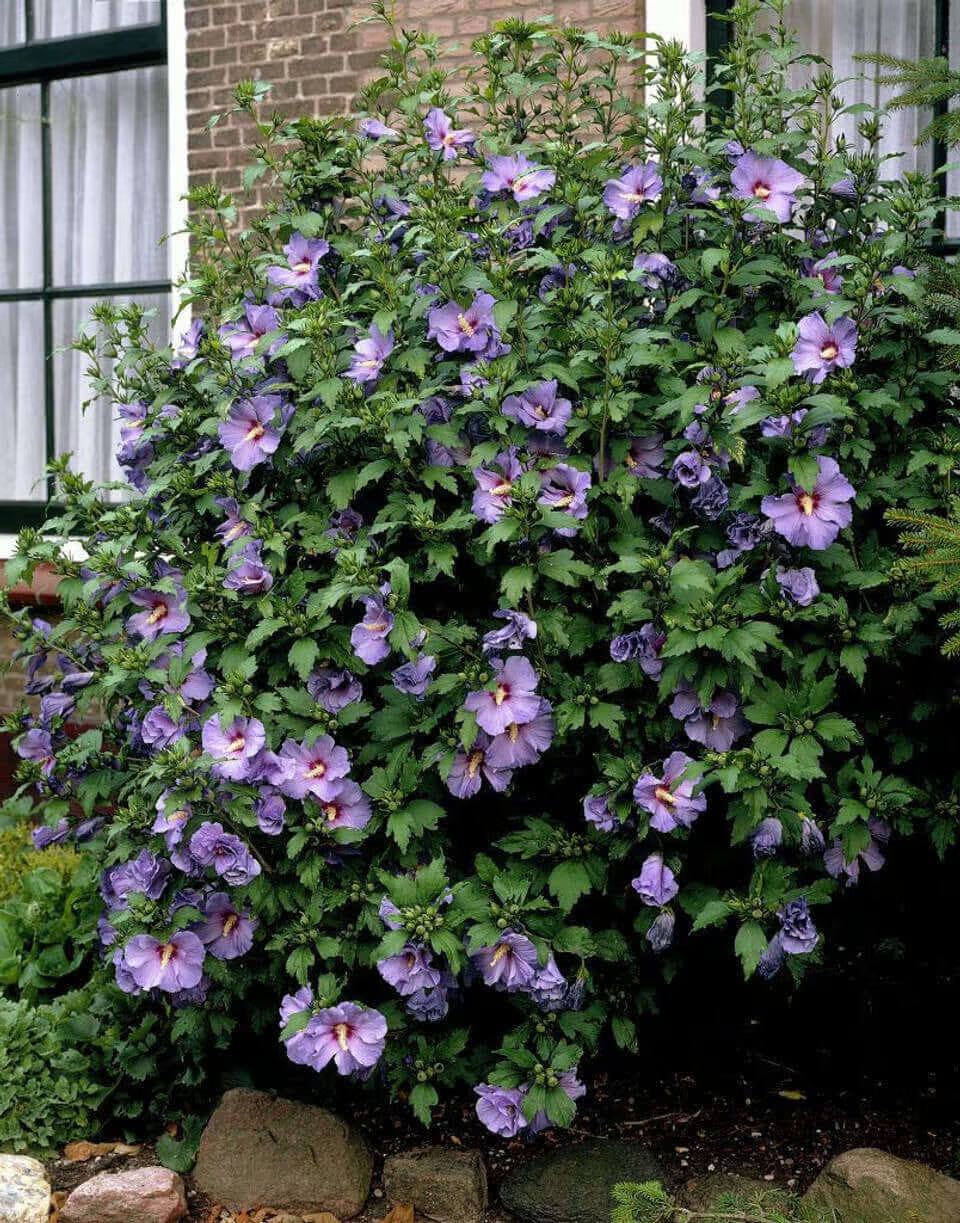
Bold Color:
The Purple Hibiscus showcases vibrant, deep purple flowers that make a dramatic statement in any garden.
Long Blooming Period:
Enjoy months of stunning color, as the Purple Hibiscus blooms from late spring through summer.
Low Maintenance:
Easy to care for with minimal upkeep, the Purple Hibiscus thrives with basic watering and occasional pruning.
Versatile Landscaping:
Ideal for both garden beds and container planting, this hibiscus fits well in various garden settings.
Caring Tips
How do I care for my Purple Swamp Rose Mallow?
Each box contains detailed care instructions and information about your product. But here's the basics.
Care Tips
Purple Swamp Rose Mallow thrives in moist, well-drained dirt and needs regular watering, particularly during dry spells. Prune dead or damaged stems in early spring to encourage new growth. It's resistant to pests and diseases, making it a low-maintenance choice.
Light Requirements
Purple Swamp Rose Mallow thrives in full sun to partial shade. It prefers at least 6 hours of direct sunlight daily for optimal blooming, but it can tolerate some shade, especially in hotter climates. The full sun encourages vibrant blooms.
Hardy Planting Zones
4 • 5 • 6 • 7 • 8 • 9
Header
Use this content to share information about your store and products.
Frequently Asked Questions
How often should I water my plants?
How do I know if my plant is getting too much or too little sunlight?
What should I do to prepare my plants for winter?
What are the signs that my plant needs fertilizing?
How can I prevent pests from damaging my plants?
How do I choose the right plant for my climate zone?





